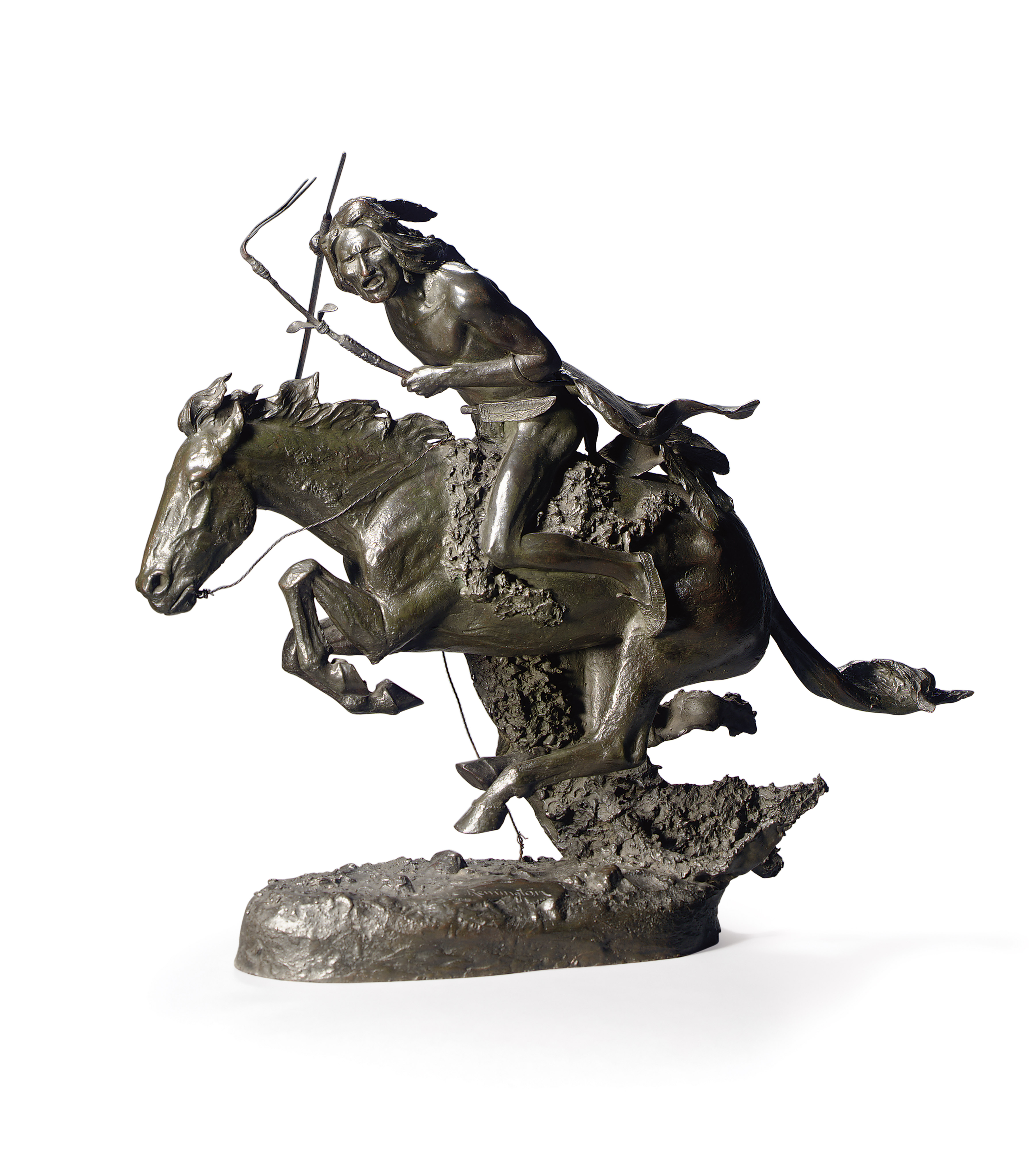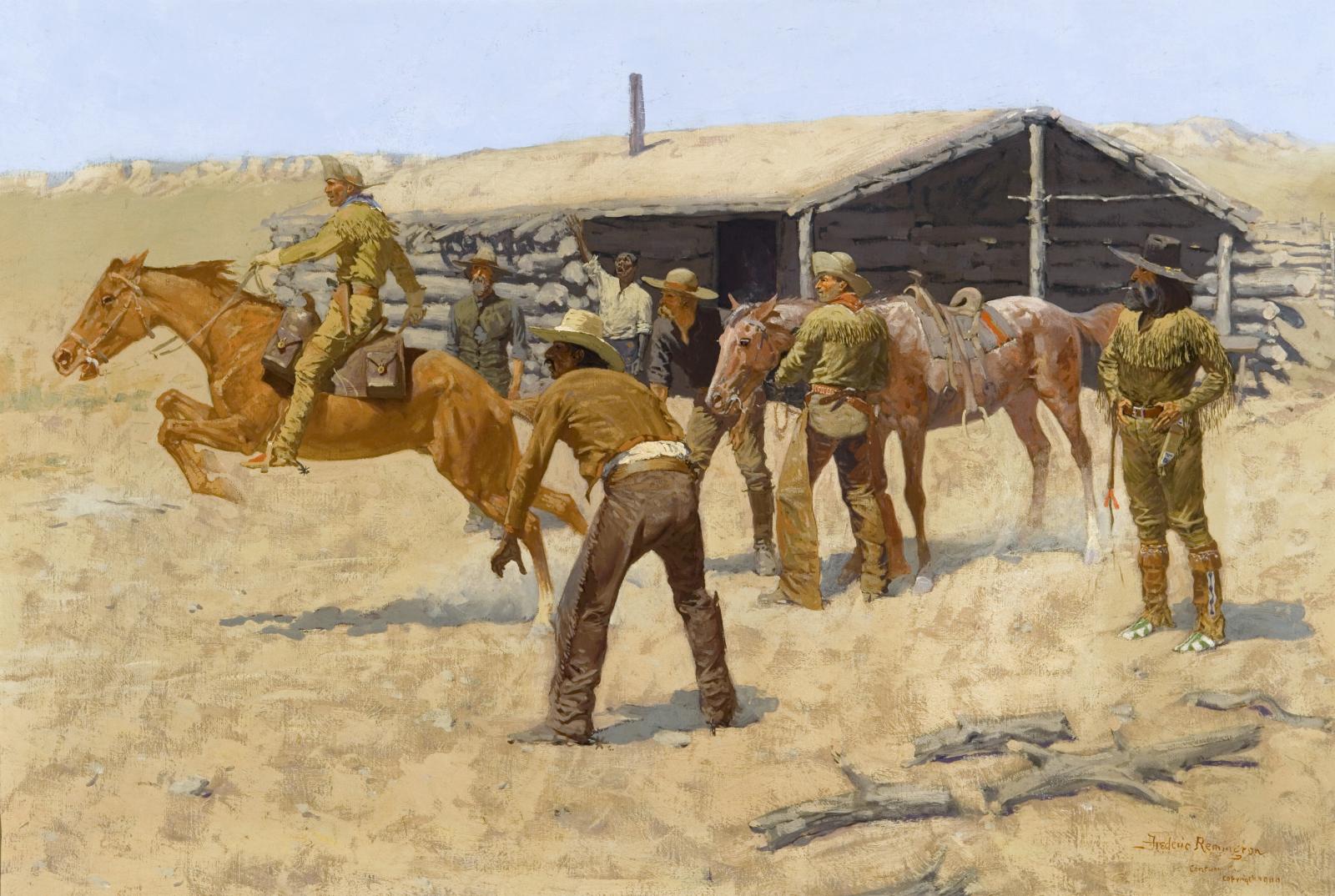Remington, Frederic (1861-1909), was an American artist best known for his action-filled paintings, drawings, and sculptures of cowboys and Indians. His works became famous for capturing the vitality and spirit of the West.

Remington was born on Oct. 4, 1861, in Canton, New York. He loved horses and outdoor life as a child and often sketched Western characters and dramatic battle scenes. He studied art at Yale University from 1878 to 1880. His first published drawing appeared in the campus paper.
In 1881, Remington traveled to Montana on the first of many Western trips. He decided in 1885 to become an artist and to devote his art to portraying the rapidly vanishing soldiers, cowboys, Indians, and open lands of the West. He lived in the East, but traveled throughout the West to gather material for his pictures.

Remington’s early works were precisely drawn and full of detail. His illustrations for Henry Wadsworth Longfellow’s poem The Song of Hiawatha (1891) show his technique of this period. Remington later painted with less detail, but he expressed more moods and emotions. He used broader brushstrokes and became more concerned with color and the effects of light. Downing the Nigh Leader (1907) illustrates his late dramatic style. He also gained praise for his quietly romantic night scenes. In his sculptures, Remington made dynamically balanced figures, as in Bronco Buster (two versions, 1895 and 1909).

Remington illustrated many of his own books, including Pony Tracks (1895) and The Way of an Indian (1906). He died on Dec. 26, 1909. Many of his works are in the Remington Art Memorial in Ogdensburg, New York, and the Whitney Gallery of Western Art in Cody, Wyoming.
